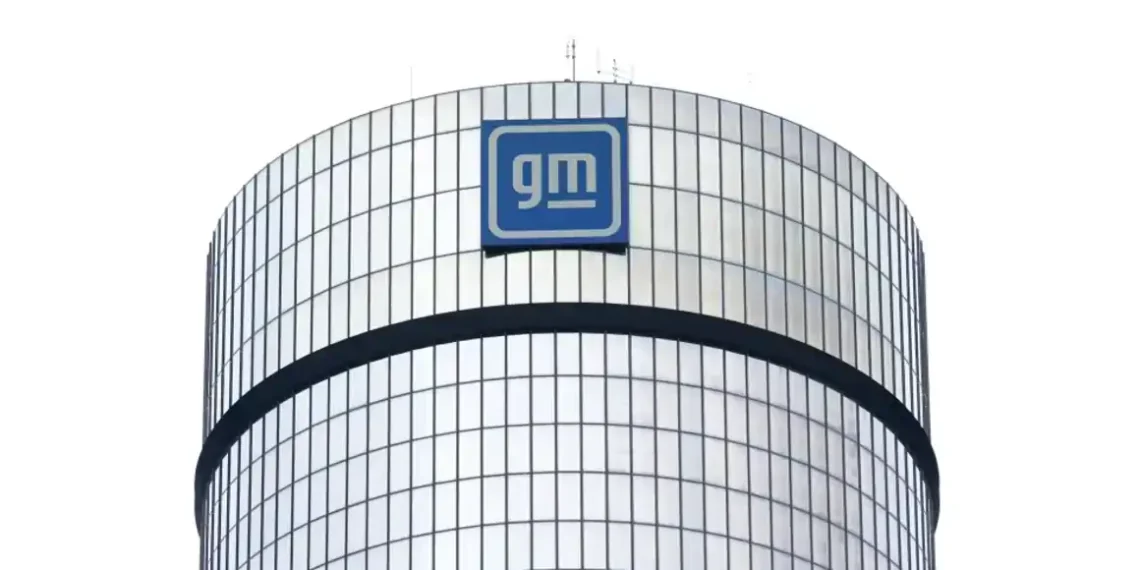GM Earnings Beat Estimates Despite Tariff Pressure and EV Challenges
July 23, 2025 – 4:30 PM
General Motors posted stronger-than-expected earnings for the second quarter of 2025, even as tariffs and slowing electric vehicle (EV) sales put pressure on the company’s overall performance. CEO Mary Barra emphasized the automaker’s strategy to invest more in U.S. manufacturing as a way to offset up to $5 billion in tariff exposure this year.
Here’s what happened, who’s involved, and why it matters: GM is responding to trade policy shifts and rising costs from tariffs by reshuffling production and focusing on both EV and gas-powered vehicle markets. Despite some headwinds, the company continues to see strong demand and maintains its full-year financial forecast.
GM Reports $1.89 Billion in Q2 Profit Despite Tariff Costs
For the quarter ending June 30, General Motors earned $1.89 billion, or $1.91 per share. That’s down from $2.93 billion, or $2.55 per share, in the same period last year. However, adjusted earnings were $2.53 per share—topping Wall Street’s estimate of $2.34, according to FactSet.
Revenue came in at $47.12 billion, slightly below last year’s $47.97 billion but still beating analysts’ expectations of $45.84 billion.
Shares fell nearly 2% in early trading Tuesday following the report.
GM Faces Tariff Pressures—Up to $5 Billion in 2025
CEO Mary Barra told shareholders that GM is working to “greatly reduce our tariff exposure,” highlighting a $4 billion investment in U.S. assembly plants. The company expects tariffs imposed by the Trump administration to have a greater impact in Q3, particularly due to indirect costs.
Barra said GM aims to build more than 2 million vehicles annually in the U.S. as it scales up operations.
CFO Paul Jacobson added:
“Over time, we remain confident that our total tariff expense will come down as bilateral trade deals emerge and our sourcing and production adjustments are implemented.”
GM says it’s making progress in reducing at least 30% of the estimated $4–5 billion in gross tariff impact this year through local manufacturing shifts, cost controls, and adjusted pricing.
EV Sales Grow, But Industry Demand Slows
EV sales at GM climbed to 46,300 in Q2, up from 31,900 in Q1. Despite this growth, the overall pace of EV adoption in the U.S. is slowing. A key factor is the looming expiration of the $7,500 EV tax credit under the Inflation Reduction Act, set to end in September for many vehicle models.
Barra acknowledged the industry’s shift:
“Despite slower EV industry growth, we believe the long-term future is profitable electric vehicle production.”
She added that GM will continue adapting to market demand by focusing on customer preferences and maintaining a flexible production strategy, including ongoing investments in U.S.-based battery production.
Warranty Costs Rise Due to Early EV Software Issues
One setback in the quarter was a rise in warranty expenses. Jacobson explained that this was largely due to early software issues with some EV models. GM responded by offering extended warranties where needed and is now working to improve supplier quality.
This is part of GM’s broader effort to ensure long-term trust in its EV lineup, even as it works through early production and performance challenges.
Trade Policy Uncertainty Still a Big Factor
President Donald Trump’s decision in April to roll back parts of the 25% tariffs on autos and auto parts provided some relief, but uncertainty remains. Automakers have warned that ongoing tariffs could raise prices, reduce vehicle sales, and make U.S. production less competitive globally.
The Center for Automotive Research estimates that a uniform 25% tariff on all trading partners would increase costs by $107.7 billion for all U.S. automakers—and $41.9 billion specifically for Detroit’s Big Three: GM, Ford, and Stellantis.
$4 Billion Investment to Shift Production Back to U.S.
To respond to these challenges, GM announced in June a $4 billion investment to shift production from Mexico to U.S. plants. This move will take place over the next two years and apply to both EV and internal combustion engine (ICE) vehicles.
Barra described the investment as part of a long-term strategy:
“We are positioning the business for a profitable, long-term future as we adapt to new trade and tax policies and a rapidly evolving tech landscape.”
Financial Outlook for 2025 Remains Steady
Despite the current challenges, GM is sticking with its full-year forecast. In May, the automaker lowered profit expectations slightly, anticipating adjusted earnings before interest and taxes to fall between $10 billion and $12.5 billion in 2025.
This guidance already factors in the $4–5 billion tariff exposure and reflects a cautious but strategic approach as GM navigates shifting policies and demand trends.
Industrywide Impact: Stellantis Also Reports Losses
GM’s earnings report follows news that Jeep maker Stellantis expects a net loss of $2.68 billion in the first half of the year due to U.S. tariffs and other charges. Stellantis will release its full results on July 29.
This highlights how trade policy changes are affecting the entire auto industry—not just GM.
Summary: GM Adapts Amid Trade and Tech Shifts
General Motors continues to manage its way through a changing auto landscape. With new U.S. investments, steady EV production growth, and a clear long-term strategy, GM is positioning itself for stability—even as it faces near-term pressures from tariffs, warranty costs, and shifting consumer demand.
Looking for more updates on automakers and the EV industry?
Check out our latest stories on electric vehicle trends, U.S. manufacturing shifts, and global trade policy developments. Share this post if you found it helpful!
This article was rewritten by JournosNews.com based on verified reporting from trusted sources. The content has been independently reviewed, fact-checked, and edited for accuracy, neutrality, tone, and global readability in accordance with Google News and AdSense standards.
All opinions, quotes, or statements from contributors, experts, or sourced organizations do not necessarily reflect the views of JournosNews.com. JournosNews.com maintains full editorial independence from any external funders, sponsors, or organizations.
Stay informed with JournosNews.com — your trusted source for verified global reporting and in-depth analysis. Follow us on Google News, BlueSky, and X for real-time updates.














